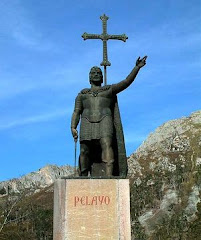
CB9M District Manager Says Goodbye, Heads to CB13Q
As Community Board 9 prepares to announce its new district manager, members are looking to fill the void left by CB9 veteran Lawrence McClean.
Long considered a staple of the West Harlem community, McClean will soon bring his brand of community outreach to other boroughs. In September, McClean left his CB9 district manager post of 15 years to fill the same position for CB13 in his longtime residence of Queens. McClean was lauded by colleagues for his work in advocating for the neighborhood while working with board members.
While at CB9, McClean made the hour-long trek to Harlem every day, and his decision to leave was in part due to the commute, CB9 secretary Ted Kovaleff said. “It’s a pretty easy decision to make,” Kovaleff said.
But for a community that remembers McClean for his work facilitating dialogue between locals and city officials, letting go has not been easy.
“He was a pillar,” former CB9 chair Maritta Dunn said. “He had the personality required to deal with people.”
As district manager, McClean ensured that CB9 functioned smoothly. Responsible for the office and everyday operations, he juggled deadlines and timetables, filings, and communication with city officials and locals.
It was this last duty which distinguished him. “He had a great working relationship with the city agency and the community,” CB9 Chair Pat Jones said.
And it was just this “very affable, friendly” ease that helped the board through stormier times, such as chair selections, according to Assemblyman Danny O’Donnell, a former board member.
“There were some volatile moments, police being called, battles over who would be the chair,” O’Donnell said, “but he remained above it, didn’t get into the mix, and always brought people back together.”
“This is a thankless job, an impossible job, but it was done with class and dignity with Larry McClean,” he added.
CB9 paid tribute to McClean at its September general board meeting, a day which Jones declared “Lawrence T. McClean Appreciation Day.”
“You’re part of the fabric of my life, you’re part of the way I do things,” McClean said. “I learned how to do it from the people here, so what success I may have is basically based on Board 9.”
Several noted that McClean’s work benefited not only the West Harlem community, but the city as a whole. While chair, Kovaleff worked on a snow removal initiative that required site visits.
“Larry was the one who coordinated and scheduled those site visits, and now we have the best, most well thought snow removal program of anywhere in Manhattan,” he said.
Another time, Kovaleff recalled, he and McClean developed a plan for lead abatement during the painting of West Side Highway. “This program that we developed ... is now a citywide program,” he said.
McClean’s efforts ensured his longevity at the board. “He was the DM [district manager] through nearly five chairs,” Dunn said, “and over the years he was just always there.”Kovaleff, who was part of the nominating committee that hired McClean in 1993, spoke of McClean’s role as a part of the board’s history.
“He was appointed when CB9 and Columbia were at loggerheads over the existence of each other. Right there that shows a major change in the community,” Kovaleff said. “One of these days, without Larry and a couple others like us, nobody’s going to know about all those statements the board made.”
CB9 decided on a new district manager at a closed-door meeting Thursday night, and Jones said the board would announce its decision Friday.
McClean promised in September he would use what he learned at CB9 to reform Queens’ community boards. “Out there they don’t have the kind of meetings we have here,” he said. “It will be an experience that I’m not sure how good I’d be if I hadn’t walked through the door in 1992 for a job.”
In the meantime, McClean already seems to be making headway in his new location. “I’ve had some feedback, and he’s already raised expectations out there,” Kovaleff said. “He’s good luck for them, even if they are the number 13.”
Daniel Amzallag contributed reporting to this article.













+(3).jpg)



.jpg)
+(3).jpg)

